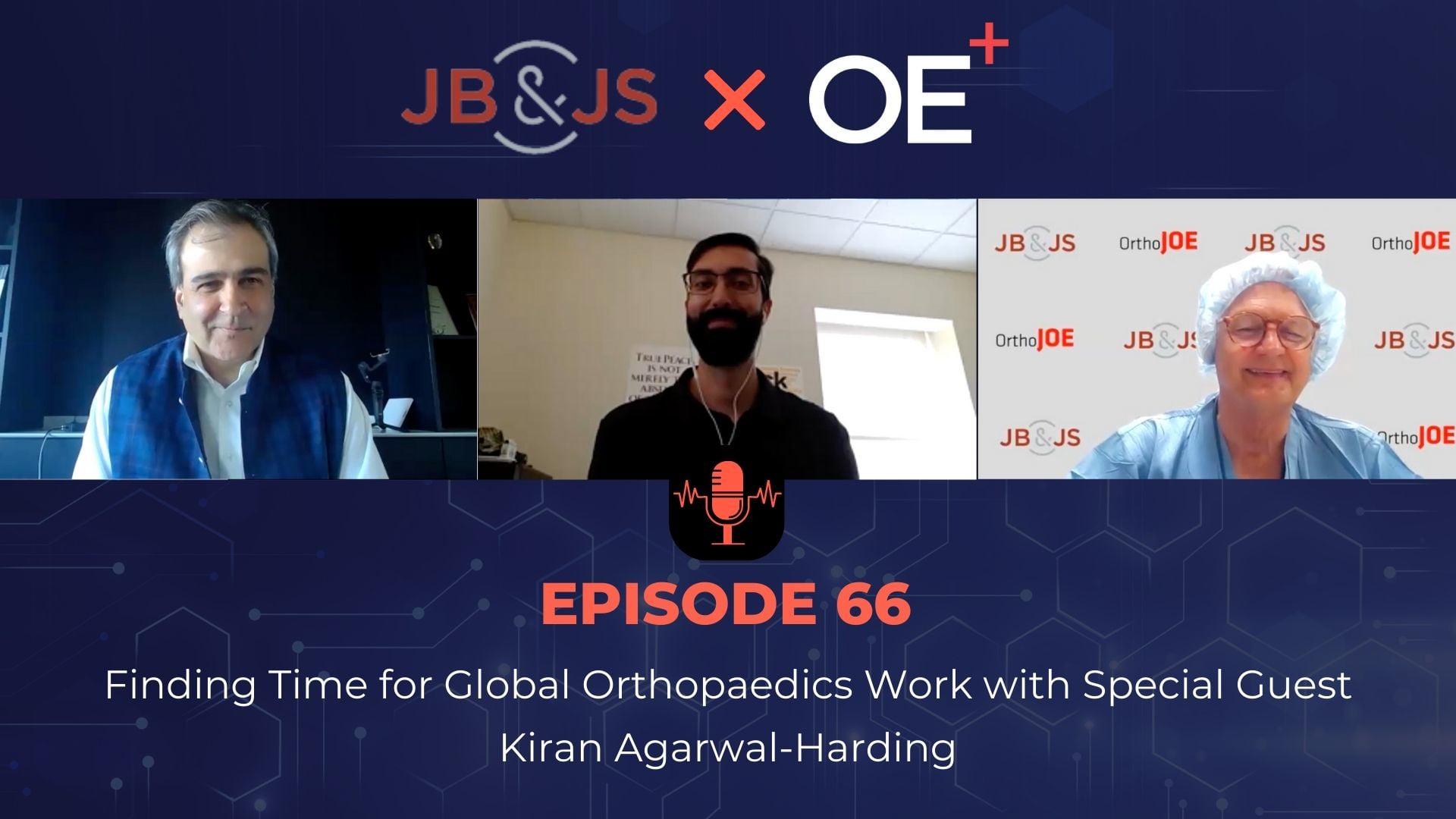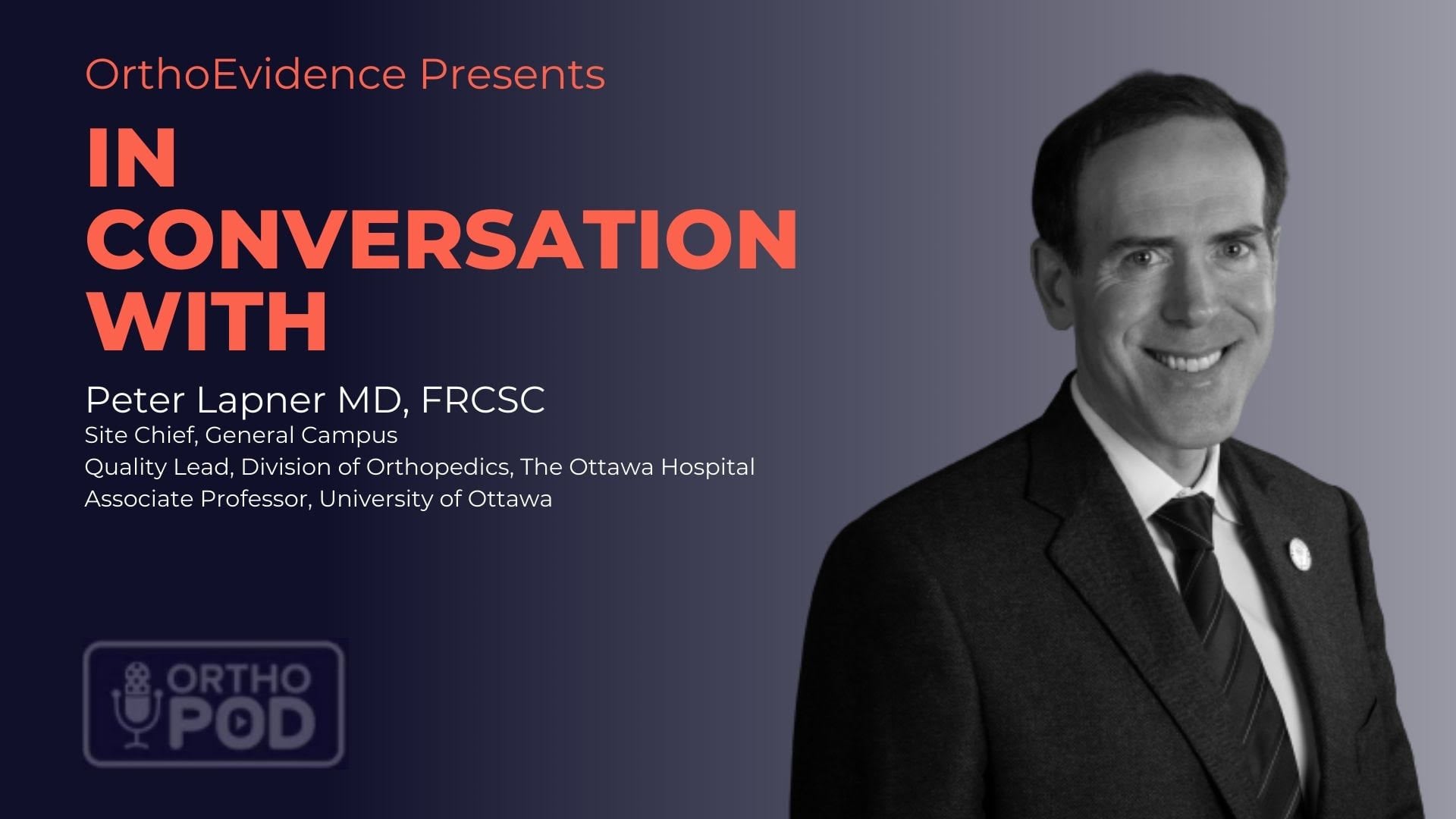
The light at the end Of the Tunnel
The light at the end Of the Tunnel

To unlock this feature and to subscribe to our weekly evidence emails, please create a FREE OrthoEvidence account
Already have an account? Click here
DISCLAIMER:
This podcast is for informational purposes only and is not intended to be a substitute for professional medical advice, diagnosis, or treatment. If you require medical treatment, always seek the advice of your physician or go to your nearest emergency department.
The opinions, beliefs, and viewpoints expressed by the individuals on this podcast do not reflect the opinions, beliefs, and viewpoints of OrthoEvidence.
“The Light At the End Of the Tunnel” - Vaccines, Reopening and Other Insights
Host:
Mohit Bhandari, MD, PhD, FRCSC
Editor-in-Chief, OrthoEvidence
Guest:
Zain Chagla, MD
Associate Professor of Medicine
Division of Infectious Diseases
Faculty of Health Sciences
McMaster University
PERSPECTIVES
Drs. Chagla and Bhandari discussed the recent trends in the COVID-19 pandemic, updates for vaccines and the potential for societal reopening after mass immunity strategy. Our discussion uncovered 3 core themes. These themes and their supporting insights are highlighted below.
1. Second Wave of COVID-19 Infections in Canada
As of November 23, the coronavirus cases in Canada have been over 310,000 (Coronavirus Cases). For about a week, there have been above 1,400 daily new cases of COVID-19 in the two most hit provinces, Ontario and Quebec. There has also been a significant rise in infection rates in provinces that were not hit hard in the first wave, including Manitoba, Saskatchewan, Alberta, and some regions in British Columbia, within a short period of time.

Things actually improved over the summertime and had relatively low rates. We are now actually seeing more growth than the traditional hot spots in Ontario and Quebec (urban density regions and also in the long-term care sectors) […] So, the next few weeks moving forward are going to be quite difficult. I think we're going to be seeing much more restrictions, and even in the coming one to two weeks, with more forward-facing industries being told to close […] and you may see more and more clamped down until the end is near.
Dr. Chagla
During summer, several factors protected people from respiratory viruses including less congregation, being outdoors more and being more dispersed than in winter. Unfortunately, winter is when respiratory viruses come back because these conditions are not easily met. There are balanced priorities including reopening schools and most businesses, and for the healthcare system, resuming surgeries and providing routine care as appropriately as possible. The Canadian society is responding to the pandemic with measures such as wearing masks, social distancing and getting tested for COVID-19 infections.
The mortality rate of COVID-19 has gone down between the first wave and the second wave but the exact reasons for this are still unclear. Dr. Chagla shared a few theories that may explain the reduction in mortality rates. First, currently with an improved treatment strategy of early, non-invasive ventilation and high-flow oxygen, many of the hospitalized patients can get through the disease. Second, the RECOVERY trial conducted in the United Kingdom has shown a significant benefit of giving dexamethasone to those who are hospitalized and on oxygen, and even more of a benefit for those who need mechanical ventilation. The practice of giving dexamethasone based on the finding of this study has changed the initial high mortality. Third, with evidence-based guidelines and a streamlined pathway of appropriate drugs now becoming available, compared to giving random therapies to patients without knowing their efficacies in the first wave, a reduction in mortality has been observed.
2. Study Results of Vaccine Efficacy
Pfizer and Moderna announced about 95% efficacy rate of their vaccines in the real world clinical trials via press release. Some of these studies involved elderly participants. In Dr. Chagla’s opinion, the results indicated significant effects of what a vaccine can achieve, and was much more than what the government's expectations were for a vaccine at 50% efficacy.

From a vaccine standpoint, I think we're starting to see a light at the end of the tunnel. the last three weeks have been exciting although all by press release, there are two mRNA candidate vaccines using a model which essentially injects mRNA into the human host, uses human ribosomal machinery to then transcribe spike protein which is on the outer surface of coronavirus and then elicit immune response.
Dr. Chagla
3. When Will the Vaccine Be Accessible
Dr. Chagla believed that it was a prospective sign for the COVID-19 vaccine to become available as the Pfizer studies reached a 162-patient threshold (announcement released on November 18) and started applying to the Food and Drug Administration (FDA) for emergency use authorization. Another vaccine based on the adenovirus vector model and developed by Oxford University and AstraZeneca will be also released on November 23 (News).
Dr. Chagla shared that from sources including the Canadian government and the Ontario government, vaccines will be showing up in Canada as early as January 2021.

With the number of doses ordered in the Canadian context, about 20 million of the Pfizer vaccine and 56 million of the Moderna vaccine, we are going to likely see most Canadians vaccinated over the course of 2021, starting with a prioritization framework that was derived from the federal government, focusing on long-term care in congregate care settings, and those who are vulnerable, their health care providers, other frontline healthcare providers that are taking care of COVID patients, and then moving on to more forward-facing professions like other physicians, police officers, nurses, teachers, and that context, and then hopefully moving out to the general population after that [...] I think even in that first three months, if you get most of the long-term care sector and their workers vaccinated, and most of the health care workers that are dealing with COVID patients vaccinated, you've eliminated a significant amount of the risk of death of the population.
Dr. Chagla
Dr. Chagla explained that with the vaccination strategy moving forward, as well as after people from vulnerable sectors and healthcare workers all receive the vaccine hopefully by the end or mid 2021, we will start to see the calm of COVID-19 becoming a manageable disease, where the hospitalization rate will be low, and the death rate will be even lower.

So there is a future. There is a light at the end of the tunnel, having two platforms (Pfizer and Moderna) that are available and sound like they'll be licensed soon is really, really impressive.
Dr. Chagla
Questions and Answers:
Dr. Bhandari: An assumption with vaccines would be that there are some people who are resistant to any vaccines (anti-vaccine individuals). If the number of this group of people is large, would there be a mandate to receive the COVID-19 vaccine from the government?
Dr. Chagla: The herd immunity strategy is populated on the fact that most people are immune, and so a critical mass of people have to be vaccinated to protect the most elderly and vulnerable. You have probably a group of people that are just very hesitant to see what a new vaccine does in the population. And you do have a group that's always going to be vaccine hesitant. I think the other part of this is because this is so tied to being normal again, if without infringing on people's rights too much, some of these semi-elective things that are actually part of normal society. So, if you want to get on a plane, you have to show proof of vaccination. If you want to send your kids to school, you have to show proof of vaccination. I think that is probably going to be the strategy moving forward. Positively encouraging the population, but saying to people, “The ticket to entry back into society, as long as this is a safe vaccine in mass quantities, is going to be getting vaccinated”.
Dr. Bhandari: When do we come back to a pre-COVID “normal” society?
Dr. Chagla: There are two facets. There are people that are extremely careful, and there are other people that are probably going to be over aggressively happy to get back into society. You may see some older members and vulnerable members still being very careful, but I think you have a lot of people that are waiting in line to get out. And hopefully this (vaccine) is the ticket out by Quarter Three or Quarter Four of 2021.
SENSE-MAKING
Dr. Chagla shared the potential reasons for the second wave of COVID-19, theories that possibly explained a lower mortality rate compared to the first wave, prospect of COVID-19 vaccines and estimated “back-to-normal” time after mass vaccination next year in 2021.
How to Cite:
Zain Chagla. “The Light At the End Of the Tunnel” - Vaccines, Reopening and Other Insights. OE Perspectives. 2020; 1(6):2.




 LOGIN
LOGIN




















Please Login or Join to leave comments.